If you’re desperate to ride on a bullet train in Japan but you’re short on time, then this post is for you. There are a few options for short bullet train rides without going too far from Tokyo, but I think the 33-minute trip from Tokyo to Odawara is the best option for most people. In this post I’ll explain why you should take the bullet train to Odawara and give you some tips for your short Shinkansen trip.
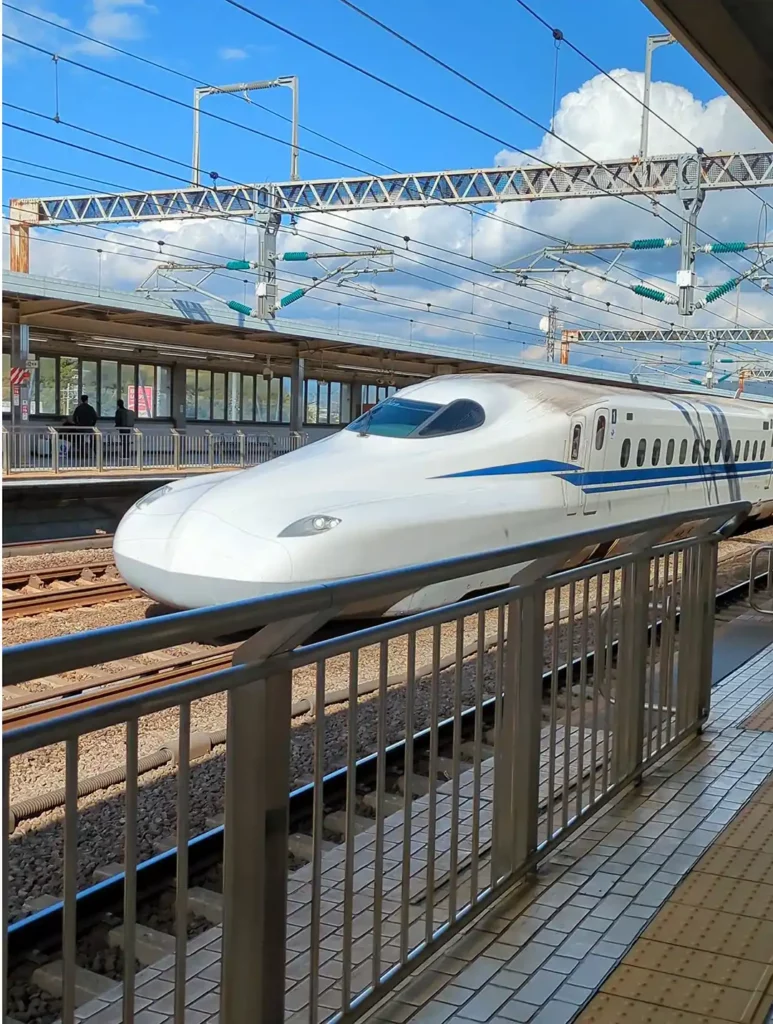
On my last trip to Japan I didn’t really need to go on a bullet train, but as an absolute train nerd I really, really wanted to. The bullet trains (known in Japan as Shinkansen, meaning ‘new main line’) have been a Japanese icon since they started operating in 1964, and for me, my trip to Japan wouldn’t have been complete without taking a short trip on one of these legendary trains.
What is the shortest journey you can do by bullet train?
Technically, the shortest journey you can do by bullet train is between Tokyo Station and Shinagawa or Tokyo Station and Ueno, but both are so short that the train doesn’t have time to build up speed, so it feels the same as a normal limited express train.
Yokohama is a little further, but again, you won’t really get to experience the speed and wonderfully smooth ride on such a short, urban journey.
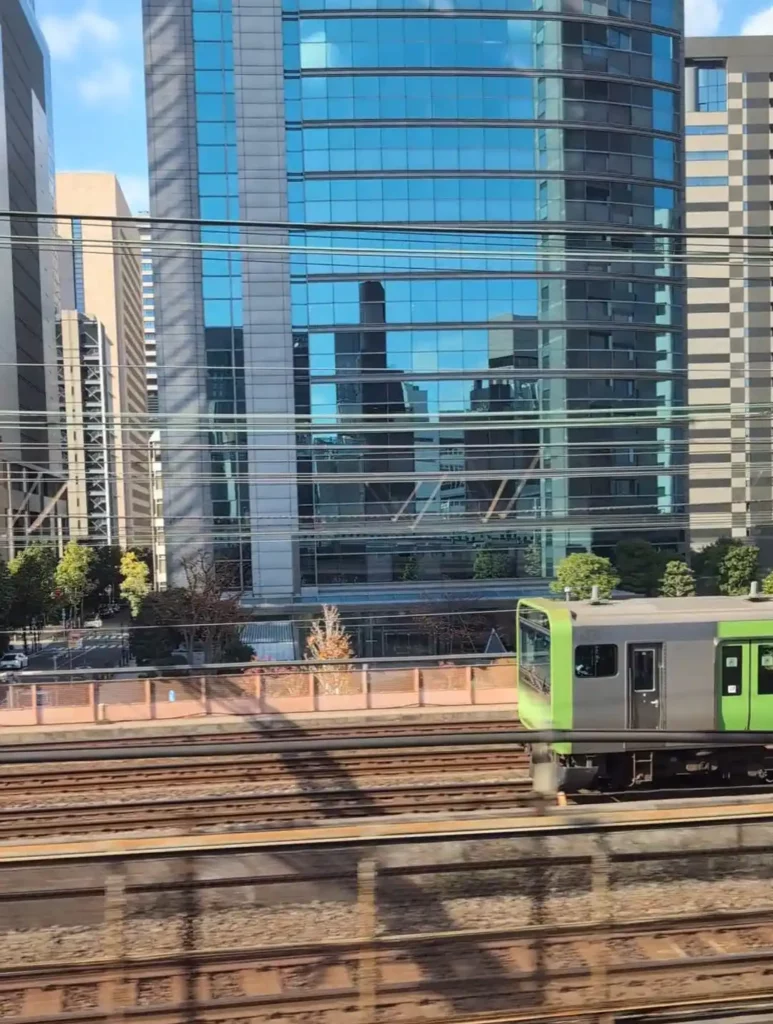
Instead, I took the Tokaido Shinkansen train from Tokyo Station to Odawara, a small town just over 30 minutes from Tokyo Station. Normal trains take well over an hour to get here so it just shows how quick the Shinkansen is!
There are several other trains from the Tokyo area to Odawara but if you’re using Google Maps to plan your journey, make sure that you’re looking at the Shinkansen train – you can tell the difference as the Shinkansen will be significantly quicker (usually 33 minutes) and has a little logo of a bullet train.
Buying your Shinkansen ticket
You should be aware that Shinkansen tickets from Tokyo Station to Odawara are also significantly more expensive than normal trains at around 3,500-4,500 yen, compared to 1,520 yen for the 1 hour 24 minute trip on the JR Tōkaidō Line or 1,910 yen for the 1 hour 10 minute direct Romancecar train from Shinjuku station. But despite the cost, the experience of taking a short bullet train ride from Tokyo Station is well worth it.
At Tokyo Station, follow signs for the Shinkansen tracks. Tokyo Station is huge and can be confusing, but there are lots of Shinkansen signs in English. If the word Shinkansen isn’t there, look for the little bullet train logos.
You can book tickets in advance on the SmartEX mobile app or on Klook, but they can be more expensive than buying tickets at the station. Unless you’re travelling at a particularly busy time or if you have bulky luggage, you should be fine to just turn up at the station and take the next train.
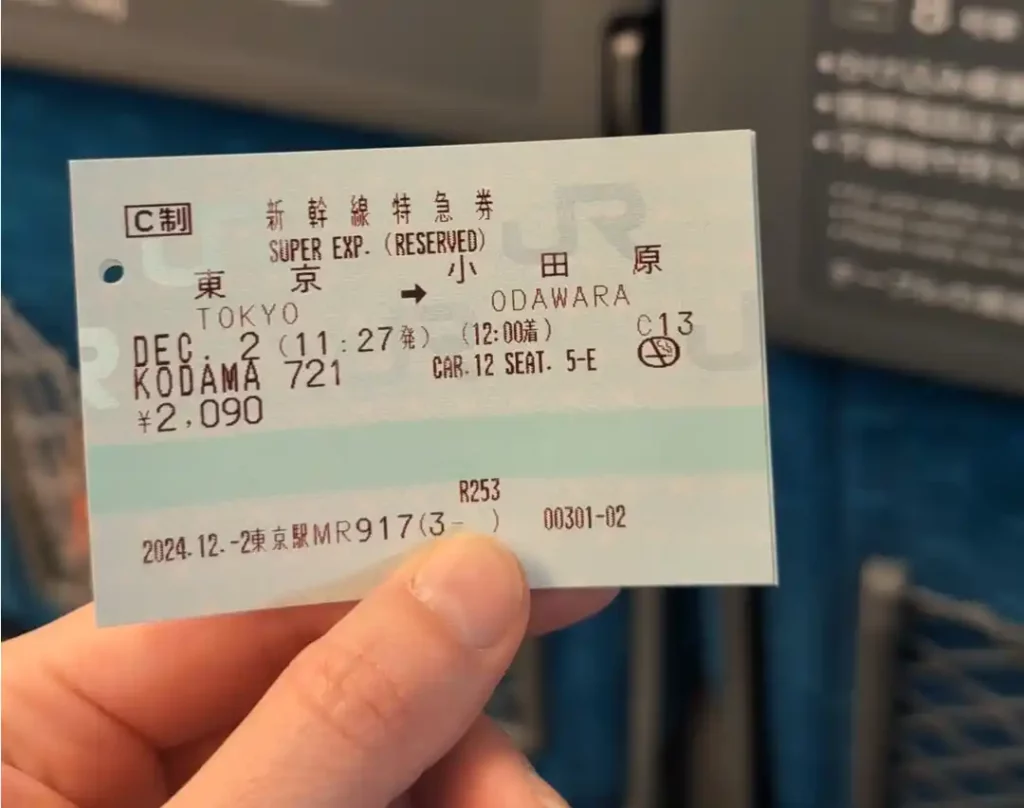
There are self-service ticket machines just before the Shinkansen ticket gates, but I found the screens really confusing and couldn’t work out how to buy my ticket. Instead, I went to the ticket desk and bought a ticket from one of the very friendly attendants. I was travelling with just a little backpack so I didn’t need any extra luggage space, and the attendant booked me a seat reservation at the same time.
Going through the Shinkansen ticket gates
Once you’ve got your ticket, you can go through the ticket barrier to the Shinkansen platforms. You’ll get two separate tickets from either the ticket machine or the attendant; hold them both together and put them into the barrier at the same time.
The barrier will read both tickets and spit them out together at the other side. Make sure you take both tickets after you’ve gone through the barrier! There are people there to help if you need it.
Arriving at the bullet train platforms
The bullet trains have their own platforms on the eastern side of Tokyo Station, and once you go through, you’ll be able to see them arriving and leaving to destinations all over Japan’s Honshu island. There are multiple Shinkansen platforms, so make sure you’re on the right one for your train.
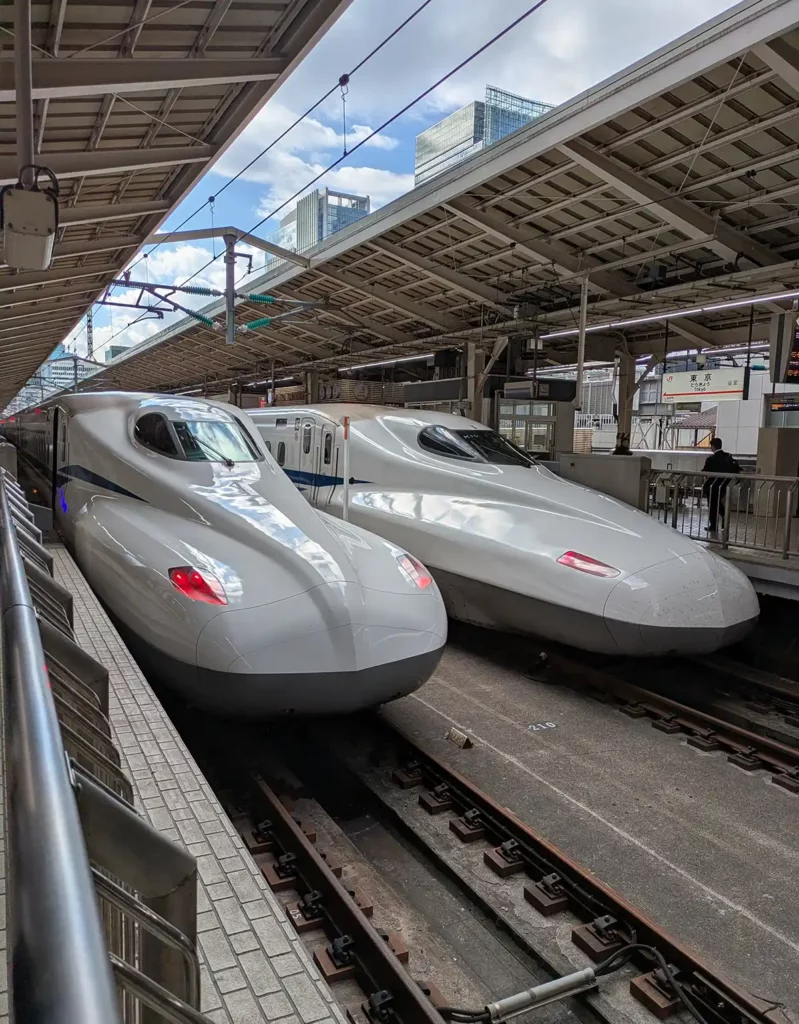
You might notice that there are other words on the boards or your ticket, besides the destination name or the name of the line. These are the names and numbers of the individual trains – make sure you’ve checked that you’ve found the right platform for your train number, name and destination. All three should be printed on your ticket, and together they make it really easy to check that you’re in the right place.
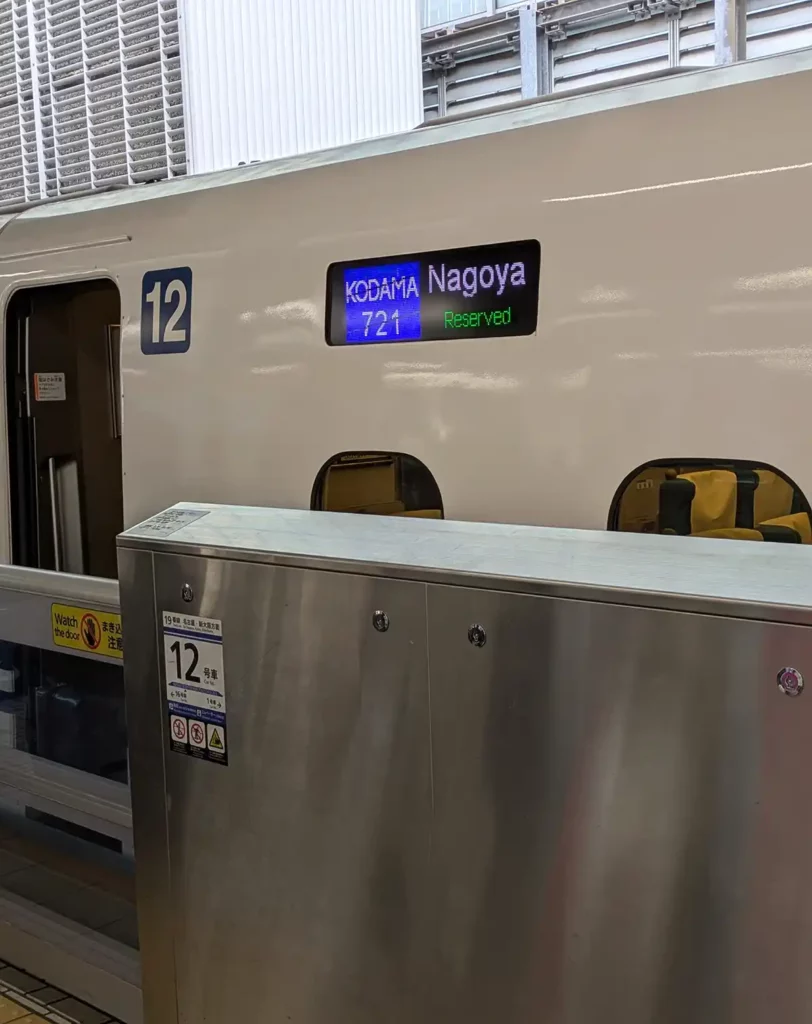
The train names indicate how fast the trains are and how often they stop. For the Tokaido line the trains are:
- Kodama, which are the slowest bullet trains on the route and stop at all Shinkansen stations, including Odawara
- Hikari, which stop at fewer stations. Some Hikari trains stop at Odawara.
- Nozomi, which are the fastest bullet trains on the Tokaido line and the second-fastest in Japan. The first stop for these trains after Yokohama is Nagoya, 1 hour 36 minutes from Tokyo; they don’t stop at Odawara.
There are vending machines on the platform (this is Japan, of course there are!) and a shop where you can buy Ekiben boxed meals – a kind of packed lunch for the journey. Unlike the Tokyo metro and local trains, it’s ok to eat on the Shinkansen. The short Shinkansen trip from Tokyo to Odawara is just enough time to eat your Ekiben as you enjoy the ride.
I loved seeing all the different models of Shinkansen, and was absolutely delighted that the cleaning crew had little bullet train-shaped carts.
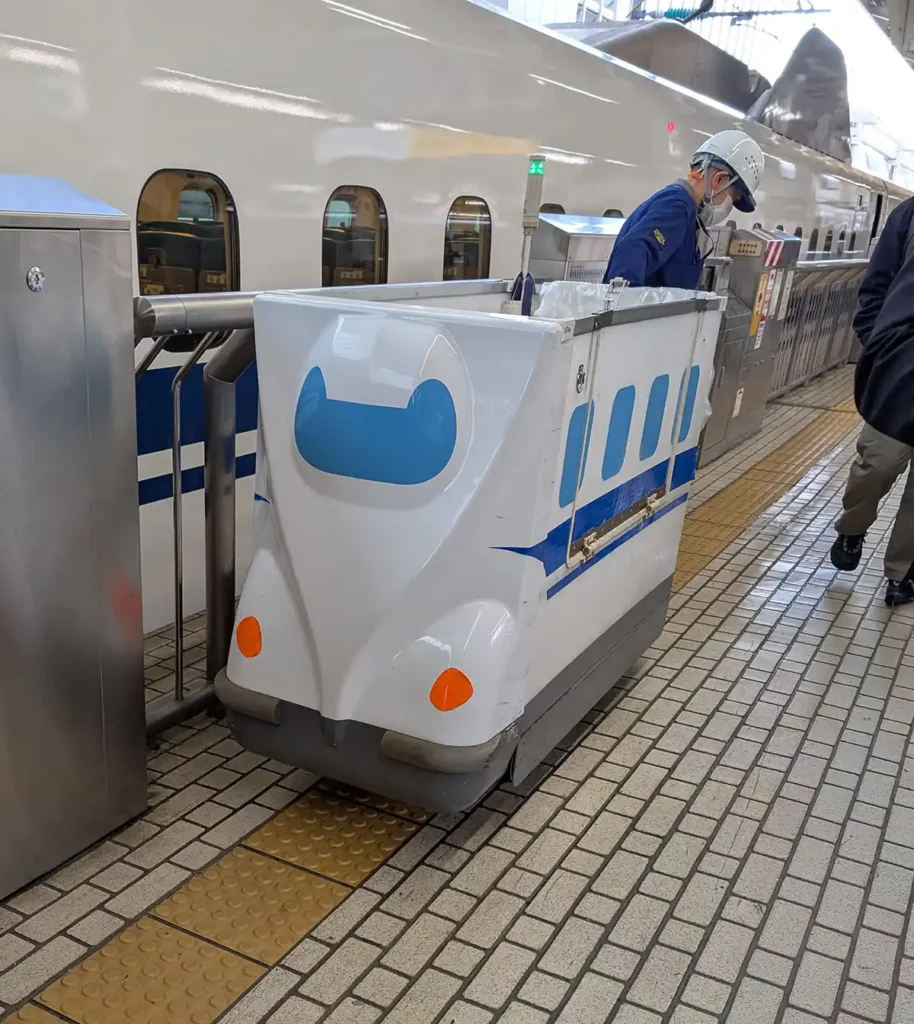
On the train
Being on the bullet train isn’t really any different to being on a normal train, but it’s still very exciting, or at least I found it exciting! The seats are in a 3+2 configuration, just like on the 1960s bullet train I saw as a little girl at York Railway Museum. There’s lots of leg room and each seat has a seat back pocket and tray table.
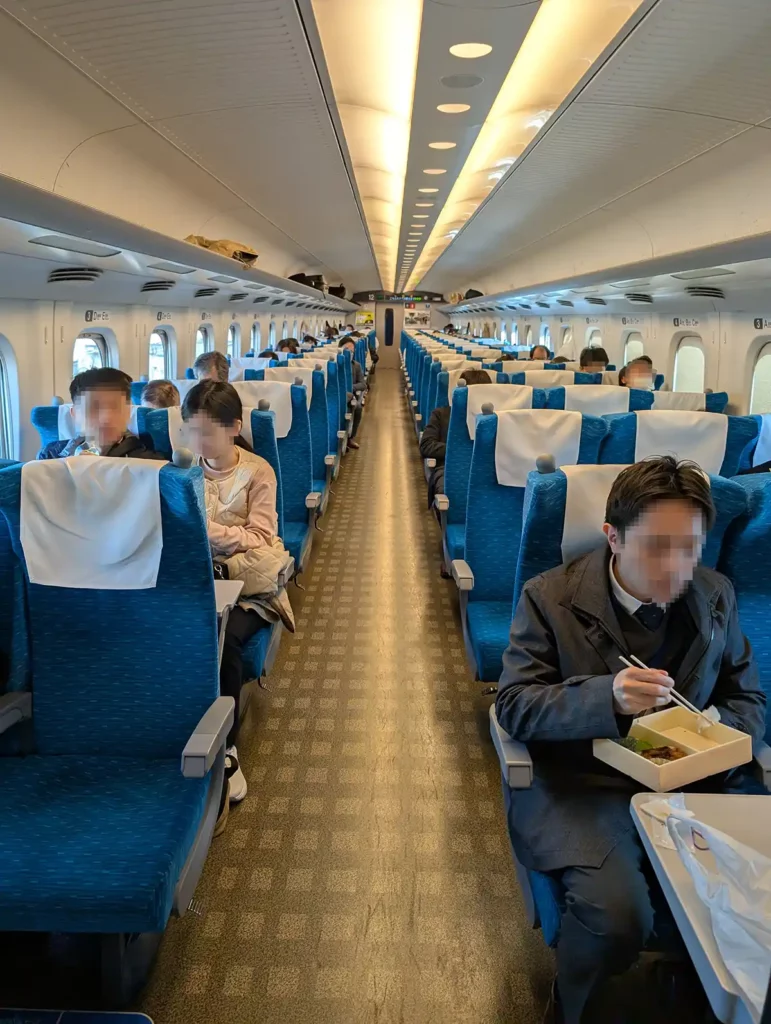
Leaving Tokyo Station, the train doesn’t go very fast, but you easily overtake the local trains as you pass by the skyscrapers of Ginza and Shimbashi. After 9 minutes we arrived at our first stop, Shinagawa. This is technically the shortest bullet train trip you can take on this route, but since you haven’t got up to full speed, I don’t think this short journey gives you the full experience.
The next station is Shin-Yokohama, but again, the train has barely had time to get above 100 mph so I don’t think it’s worth getting off quite yet.
Unlike the Italo high speed train I took from Rome to Naples, there’s no indication of how fast you’re going on this bullet train. I downloaded a speed tracking app, which clocked my train at a top speed of just under 170 mph – close to the top speed for this Shinkansen line. If you want to ride on the fastest Shinkansen train in Japan, you’ll need to travel on the Hayabusa train to Shin-Aomori, in the north of Honshu island.
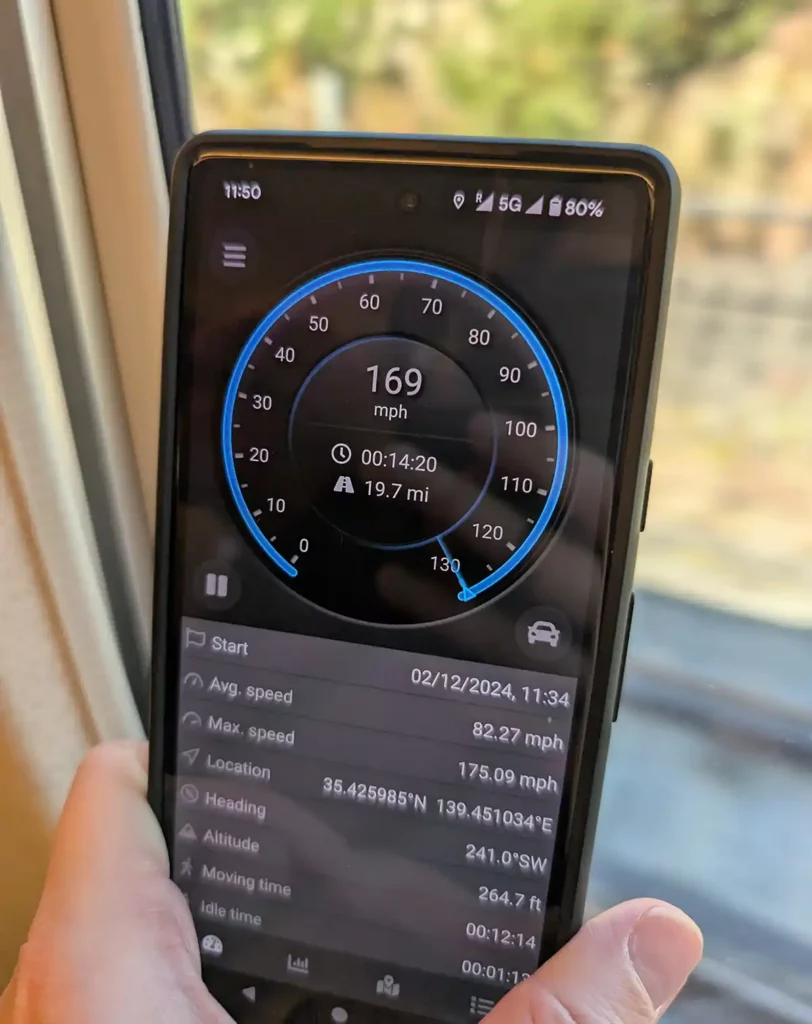
Arriving at Odawara
The great thing about choosing Odawara for your short bullet train trip is that it’s served by stopping trains but there are also lots of non-stop trains coming through.
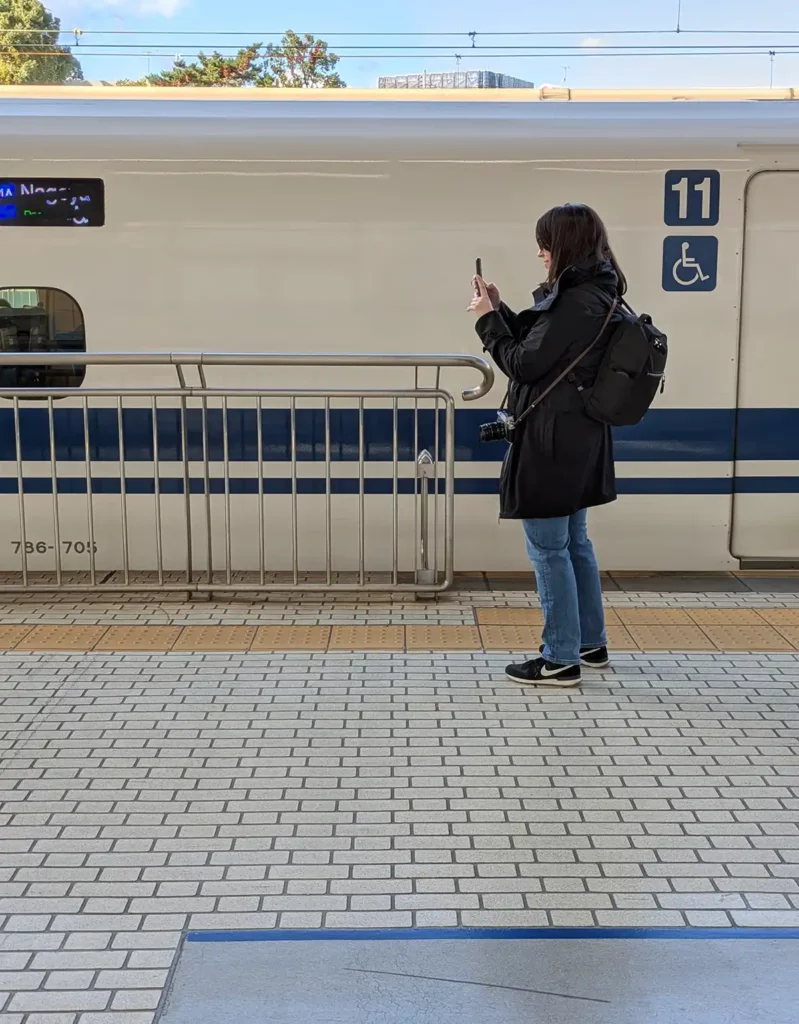
When you get off at Odawara, hang around on the platform and you’ll see non-stopping bullet trains whooshing through the station every few minutes. It was everything I’d dreamed of! Make sure you stay well back from the platform edge or you’ll get told off.
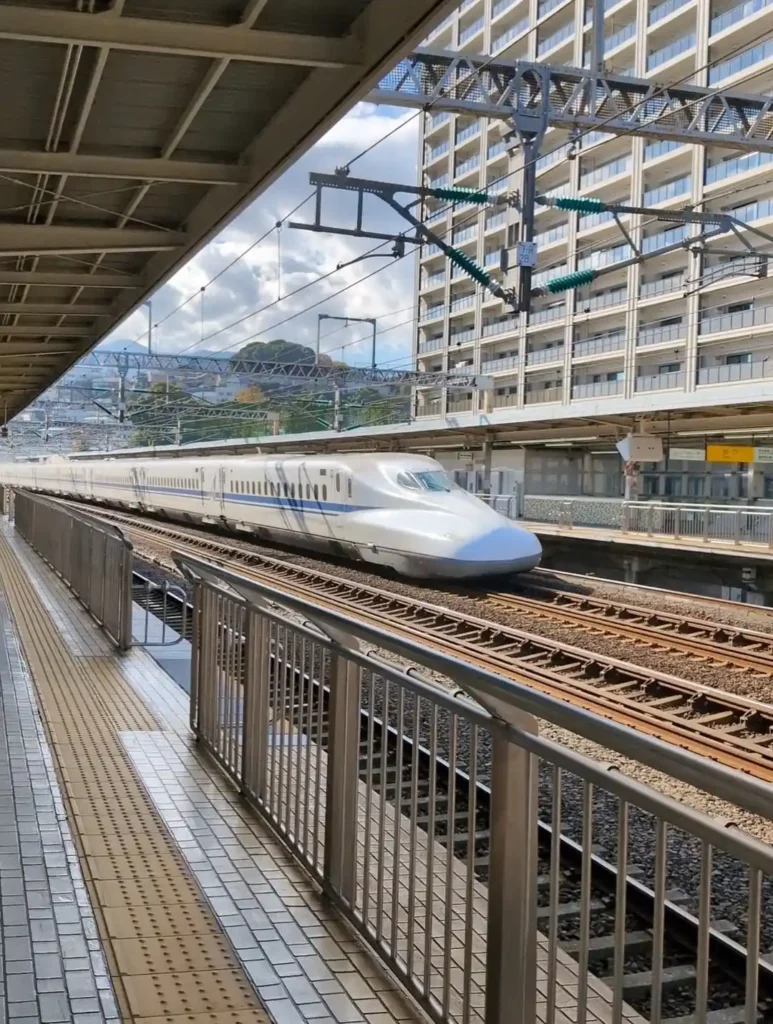
I know to listen out for the lines ‘singing’ to know when a train’s approaching, but there was barely any time to hear that sound before a non-stop train to Tokyo or Osaka came powering through the station. I stayed on the platform for around 20 minutes and in that time I saw at least four trains.
Things to do in Odawara
At Odawara you can either take a train straight back to Tokyo (maybe on a cheaper train this time!), visit the town, or use your Shinkansen trip as a jumping off point for the scenic Hakone sightseeing loop in the mountains.
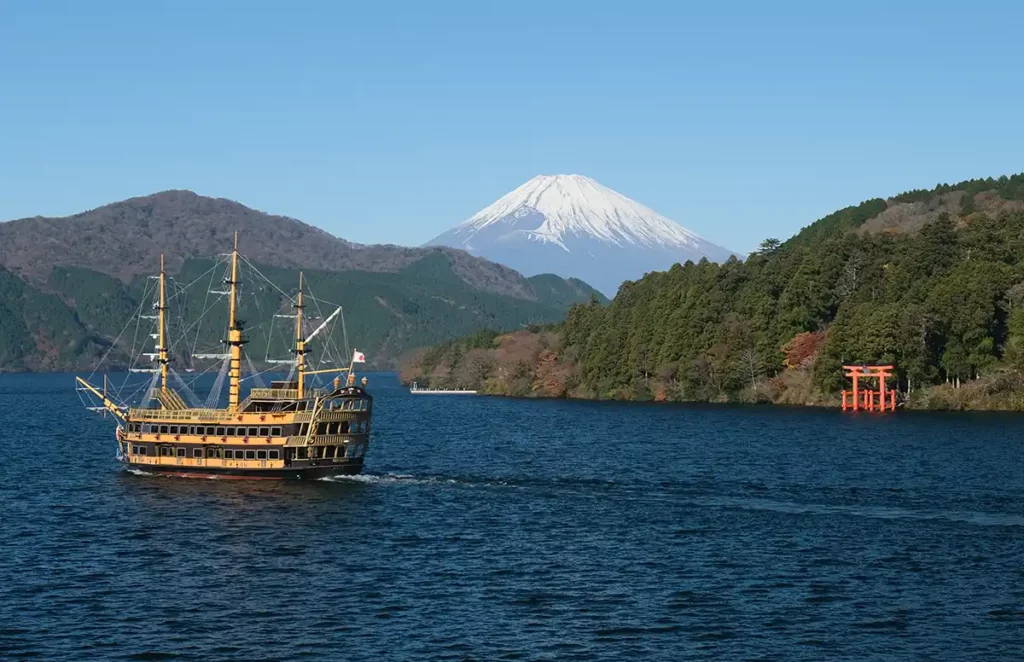
If you’re interested in trains and transport, then I really recommend doing the Hakone loop – it includes two scenic trains (including one that’s twinned with the Bernina line in Switzerland), two cable cars up and over a volcano and a ride on a pirate ship. I stayed overnight in an onsen hotel which was out of this world and had a perfect view of Mount Fuji.
If you don’t have time to visit Hakone, here are some things to do in Odawara.
Visit Odawara Castle
Odawara Castle is a reconstructed castle on the site of multiple fortified structures, dating back to the Kamakura Period (1185–1333). The current structure was built in the 1960s and is a recreation of the castle as it looked in the 1600s.
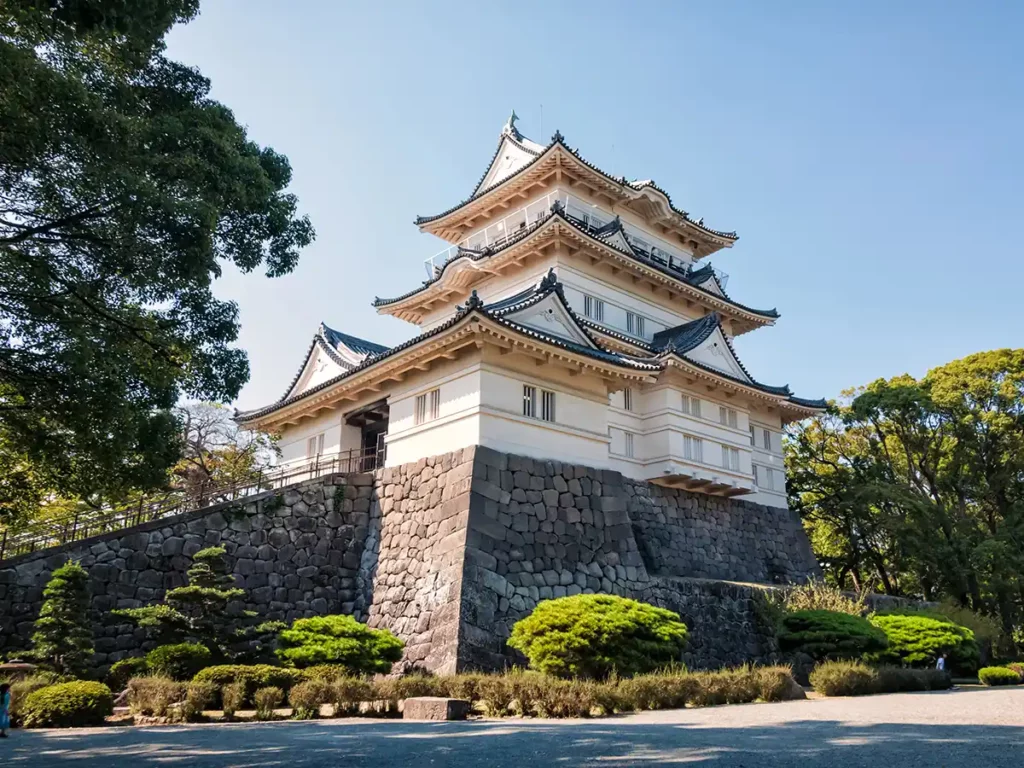
The castle is open to visit, with lots to enjoy. As well as beautiful grounds, a moat, and an exhibition in the keep, there’s a children’s playground with a miniature train, a ninja museum and kimono experience. During cherry blossom season in the spring, the cherry blossoms in the grounds are illuminated at night.
Explore the trails and views at Enoura Observatory
Designed by artist Hiroshi Sugimoto, Enoura Observatory is a hillside art gallery in former mandarin orange groves with a tea house, outdoor and indoor art and gardens. Enoura Observatory is around 20 minutes from Odawara Station by taxi.
Go to the beach
Odawara’s beach isn’t as pretty as the ones further up the coast in Enoshima and Kamakura, but taking a walk out to the seaside is a nice option for something to do in Odawara.
Visit the Museum of Literature
The Museum of Literature is a European-style villa with a picturesque garden and a collection of manuscripts by authors with connections to Odawara.
Other short Shinkansen trips from Tokyo
Not convinced that Odawara is the right choice for your short bullet train trip? Here are four more quick trips by Shinkansen from Tokyo.
Shin-Fuji – see Mount Fuji from a bullet train
The stretch of the Tokaido Shinkansen line where you can see Mount Fuji is a little further south than Odawara, so if you want to try your luck at seeing Fuji-san from the train, I recommend taking a Kodama train to Shin-Fuji Station, 1 hour 9 minutes from Tokyo Station.
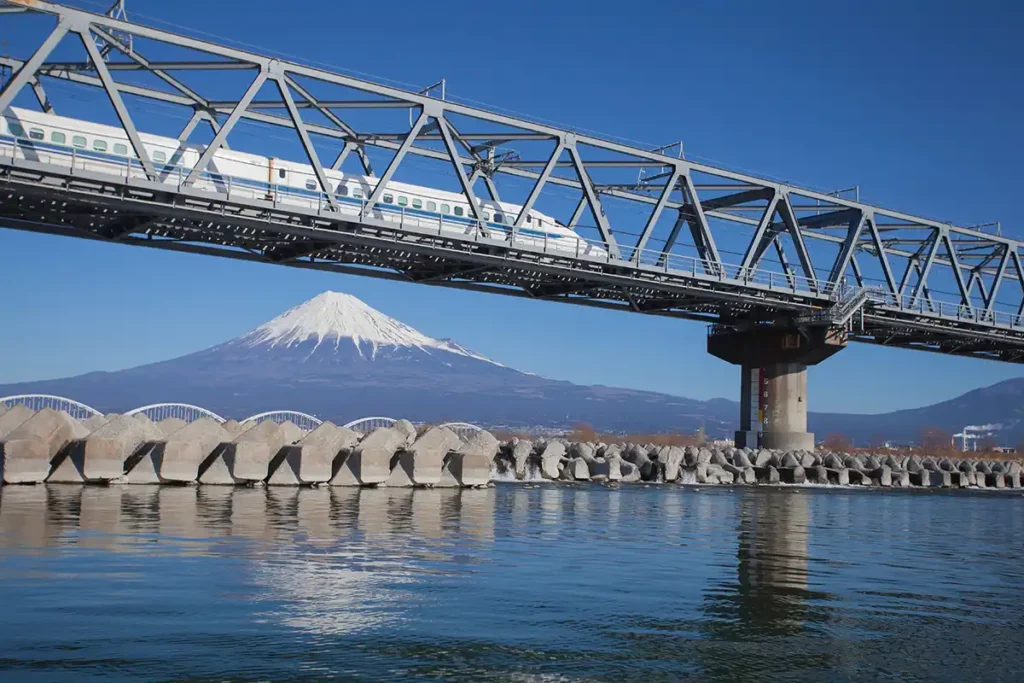
For the best views of Mount Fuji from the bullet train, you should make sure you’re sitting on the right hand side of the train leaving Tokyo. The window seat is seat F in the normal cars and seat D in the more spacious Green Car.
Fuji is known as the ‘shy mountain’, so getting to see it from the train is by no means guaranteed. To check your chances of seeing Fuji before setting off from Tokyo, you can check the Fuji webcams, which monitor the view of Mount Fuji from different locations.

The famous view of a bullet train crossing fields with Mount Fuji in the background is near Shinakafuchigawa Bridge (Google Maps link), around 7km or 10 minutes in a taxi from Shin-Fuji Station.
Omiya – visit the Railway Museum and bonsai nurseries
Shinkansen trains run from Tokyo Station to Omiya in around 25 minutes, but since normal trains only take around 30 minutes, it’s not getting up much speed. At Omiya you can take the New Shuttle people mover to the excellent Railway Museum, which has a large display of historic Japanese trains, including one of the earliest bullet trains.
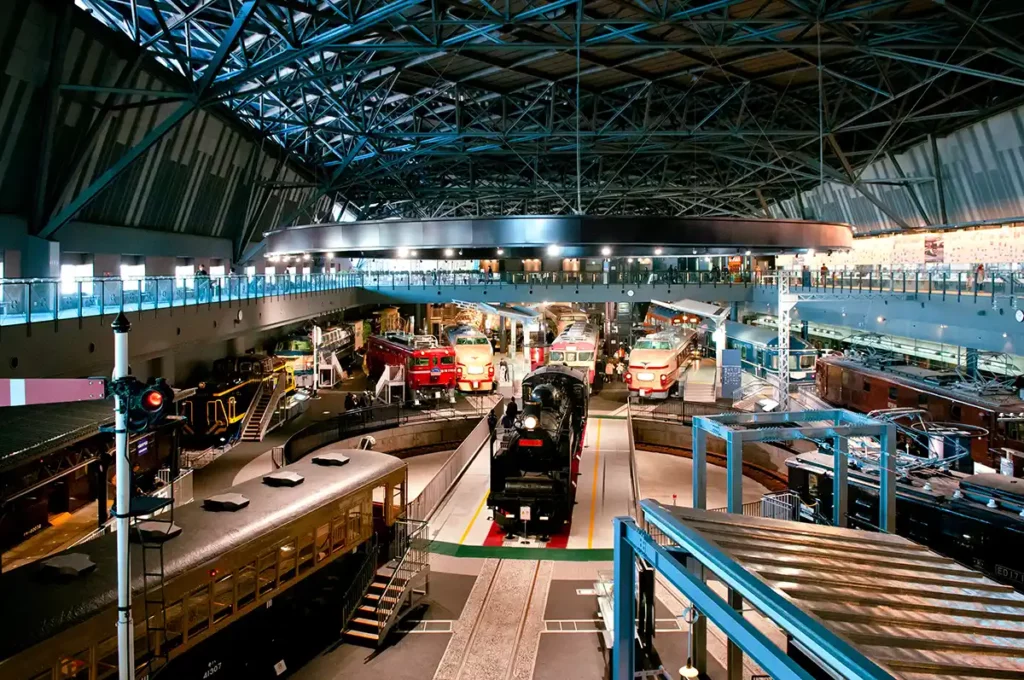
Omiya Station is also close to the Omiya Bonsai Art Museum, which sits in an area known as the Omiya Bonsai Village for its many bonsai nurseries. Nearby, you’ll find Musashi Ichinomiya Hikawa Jinja, a historic Shinto temple in lovely grounds with a lake.
Nikko – for scenery and historic temples
Nikko is a small city in Tochigi Prefecture, surrounded by beautiful waterfalls, cedar woods and famous for its historic shrines. One of the most popular sights is Shinkyo Bridge, a sacred bridge leading to the UNESCO World Heritage-listed shrines and temples.
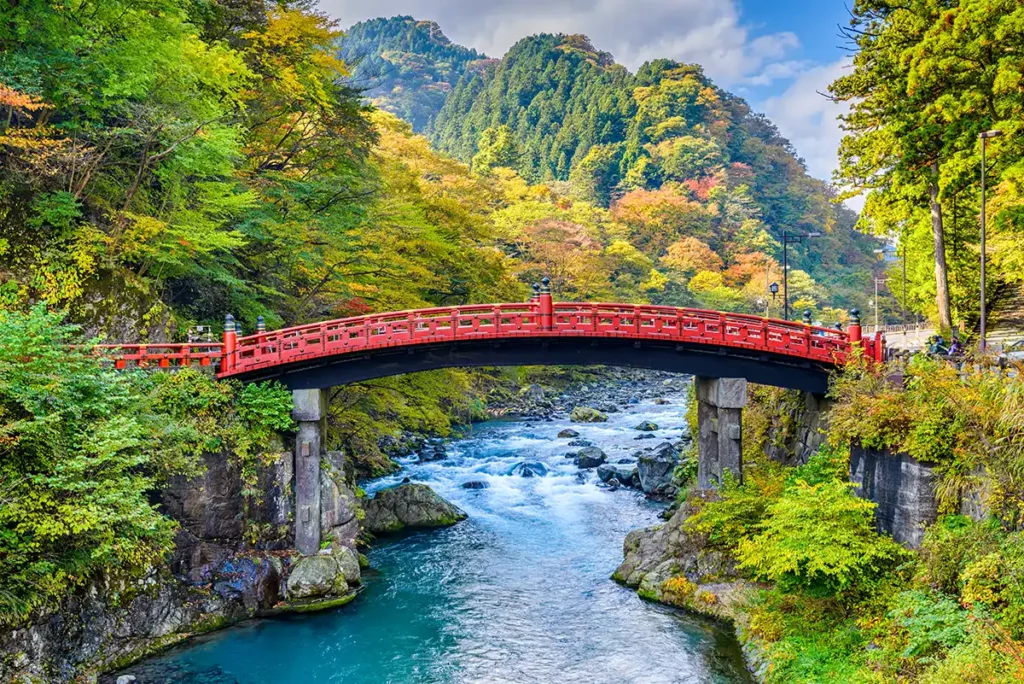
You can combine a day trip to Nikko with a short bullet train trip by taking a 48-minute Shinkansen to Utsunomiya Station then transferring to the JR East Nikko line. It’s worth hanging around on the platform at Utsunomiya Station as the fastest Shinkansen in Japan come through here without stopping.
Sendai – to ride on the fastest Shinkansen
The trip to Sendai, 350km north of Tokyo, would take over 4 hours by car, but the Tōhoku Shinkansen whooshes there in only 91 minutes.
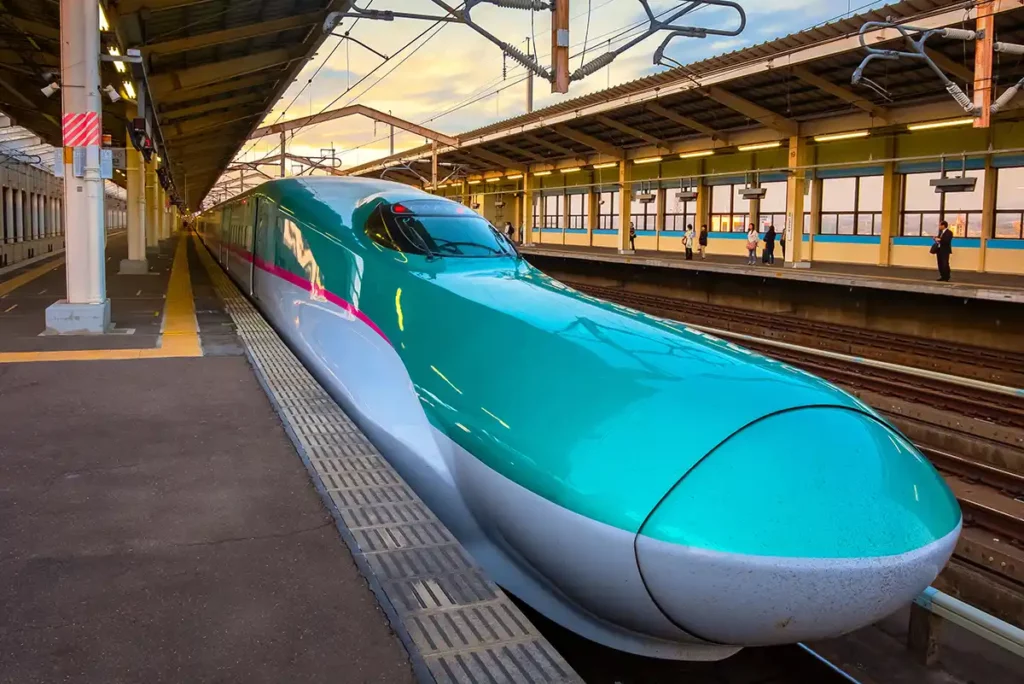
The Hayabusa train on this line is currently the fastest bullet train in Japan, with a maximum speed of 320 km/h (199 mph) on the stretch of line between Utsunomiya and Morioka. Sendai sits in the middle of this stretch, meaning you get to experience it running at top speed, without taking too much time out of your Tokyo trip.
Would you take one of these short bullet train rides from Tokyo? Let me know in the comments if you have any questions!

